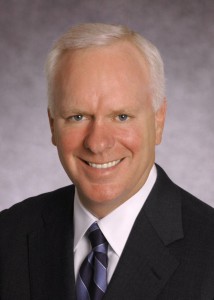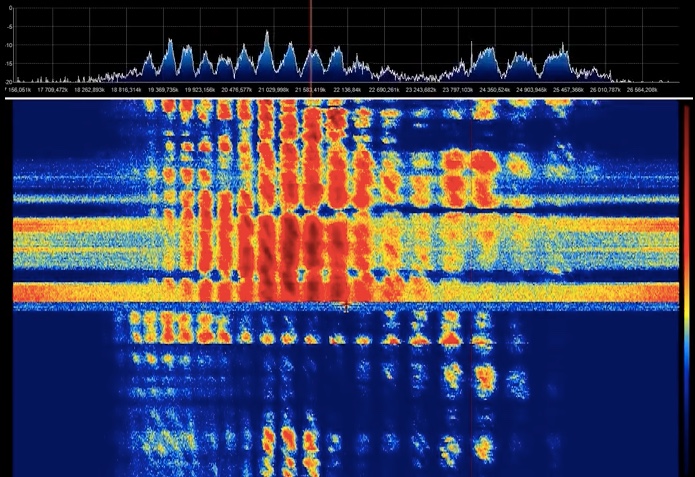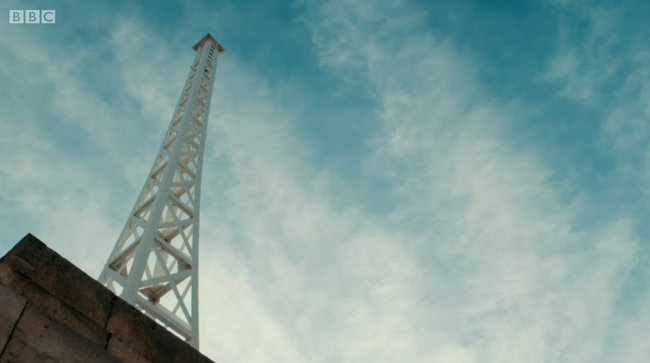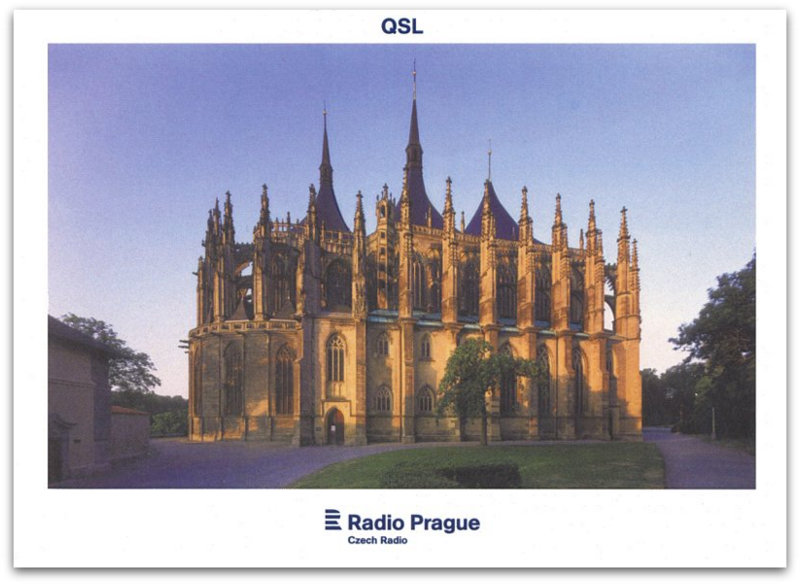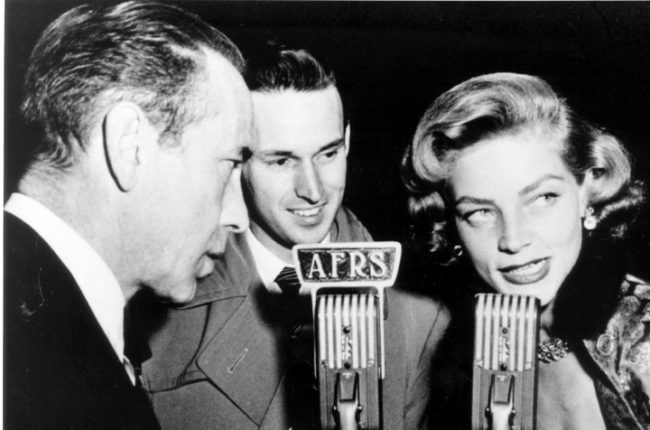
Humphrey Bogart and Lauren Bacall being interviewed by the Armed Forces Radio Service (Source: Wikipedia)
Many thanks to SWLing Post contributor, Ron, who shares this article from Radio World:
We can’t fully appreciate the importance of news from home to those who served in World War II. In the Pacific campaigns, G.I.s, sailors and Marines fought bloody island-hopping battles; as each island was cleared, garrison troops and hospitals moved in and carried on their own war against mosquitoes, isolation and boredom. The island fighters were fortunate if dated mail caught up with them before they moved on to the next target. Timely personal-level communications were pretty much absent.
Radio programming from America was available but only on shortwave. And shortwave radios were not generally available. The fortunate few had been issued “Buddy Kits” that included a radio, a small PA system and a record player for discs sent by mail. But for most there was no way to receive short-lived information such as news and sports. They were left with enemy radio propaganda such as Japan’s “Orphan Ann/Annie” (aka one of several Tokyo Roses) and the “Zero Hour” program.
No wonder that the idea of having a local island radio station doing “live from home” was so fiercely supported. Enlightened commanders saw the idea as a terrific morale-builder. The only problem was how to pull it off.
A solution, not uniquely, came from within the ranks. It started with the work of some bored but talented soldiers in the Panama Canal Zone who in 1940 built a couple of 50 W transmitters and put them on the air without authorization, labeling them “PCAN” and “PCAC.”
In Alaska, 7,500 miles northwest of Panama City, what started as programming through a loudspeaker system became a bootleg radio operation at Kodiak. Coming on the air in January 1942 and calling itself “KODK,” it delivered a whopping 15 watts to the troops. Sources with hindsight later said that the Armed Forces Radio Service (“AFRS”) was born here, when one of its progenitors visited the Alaska operations and “came up with the idea.”[…]
Click here to continue reading the full article at Radio World.

